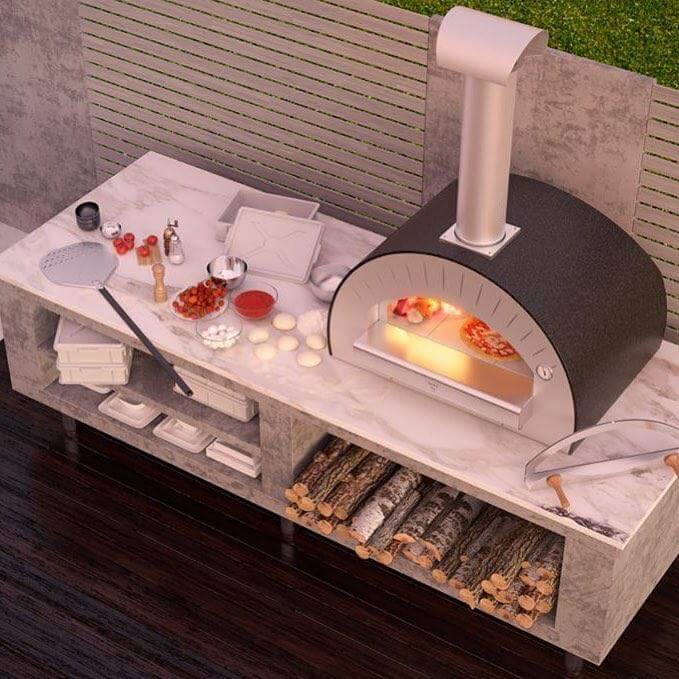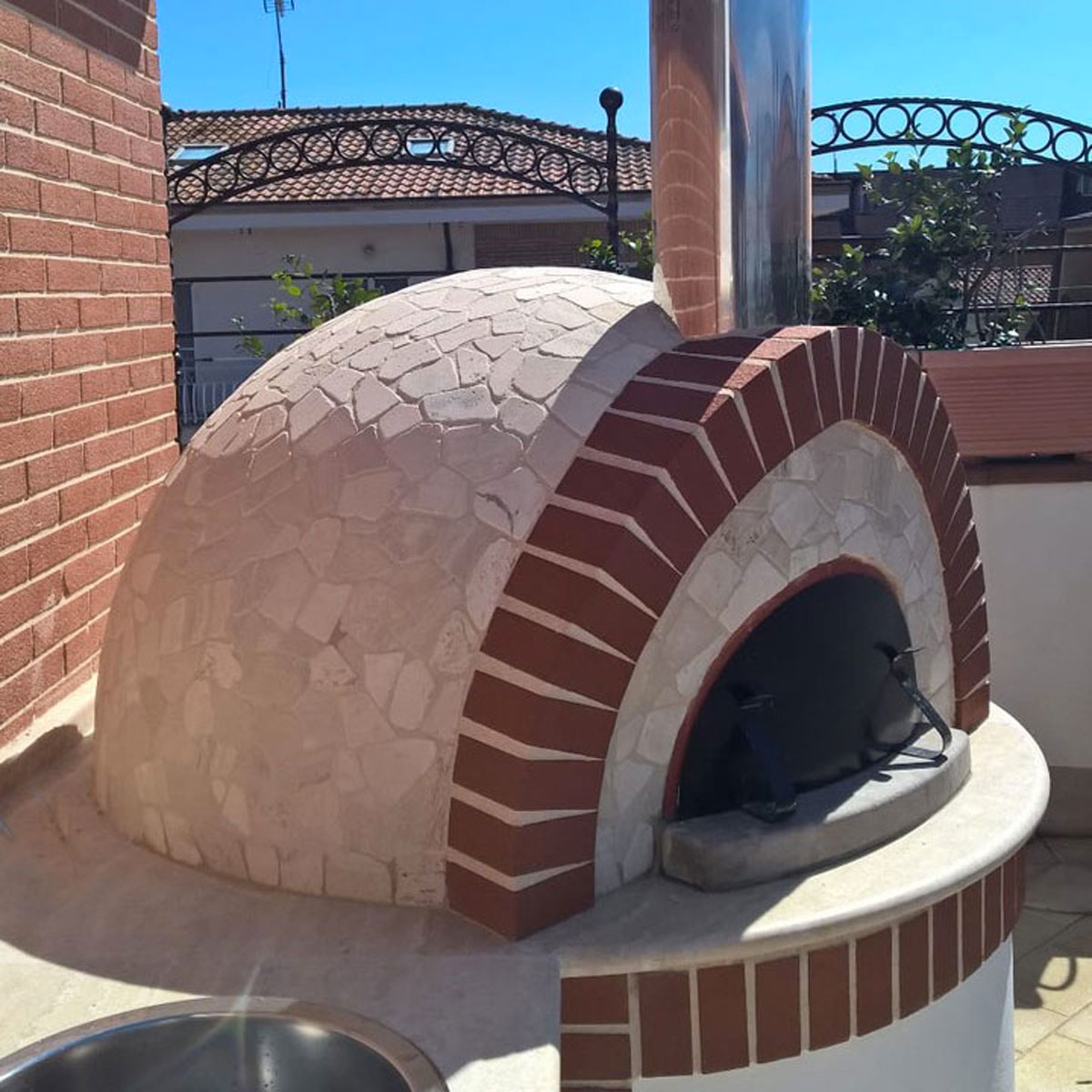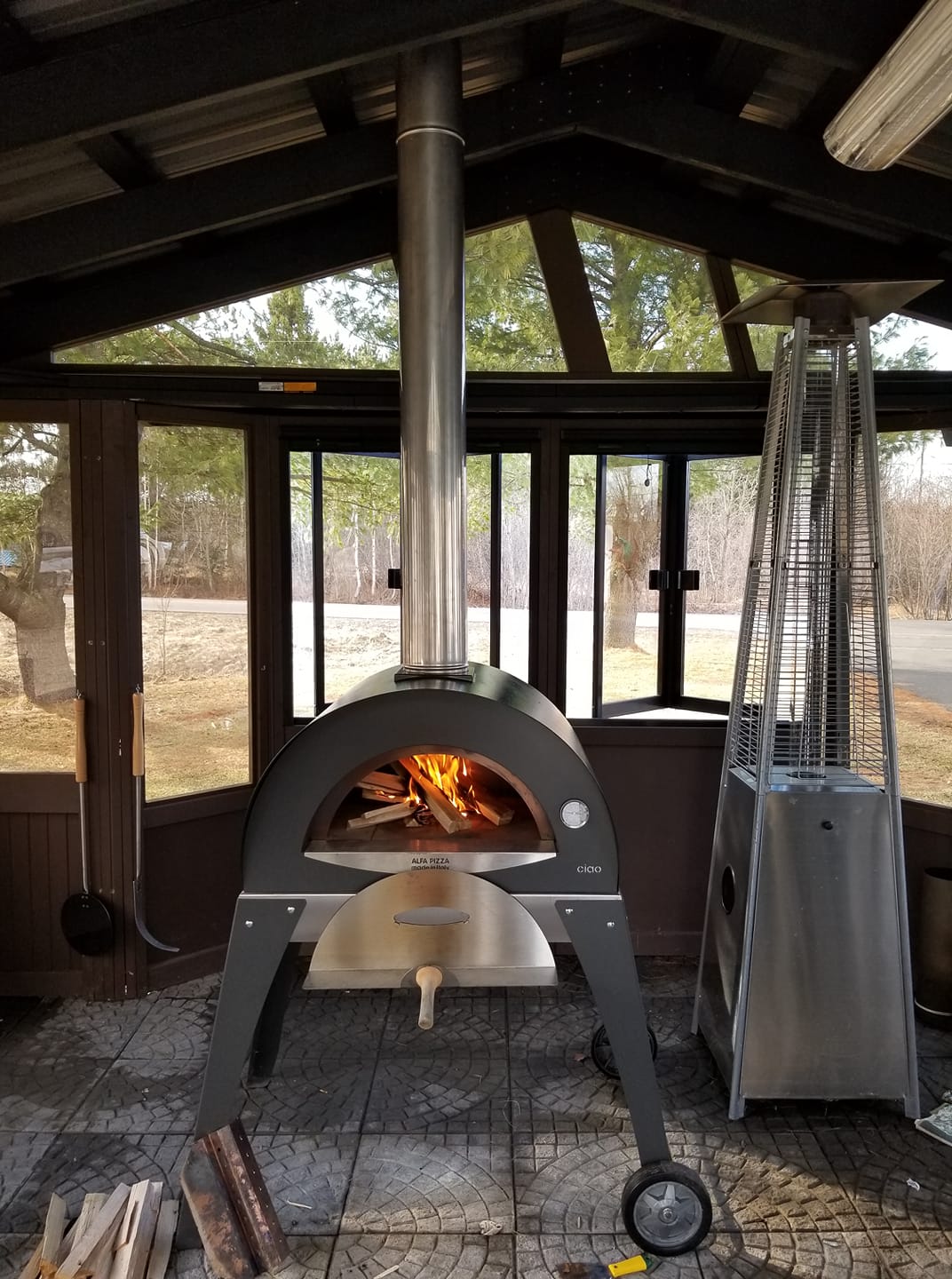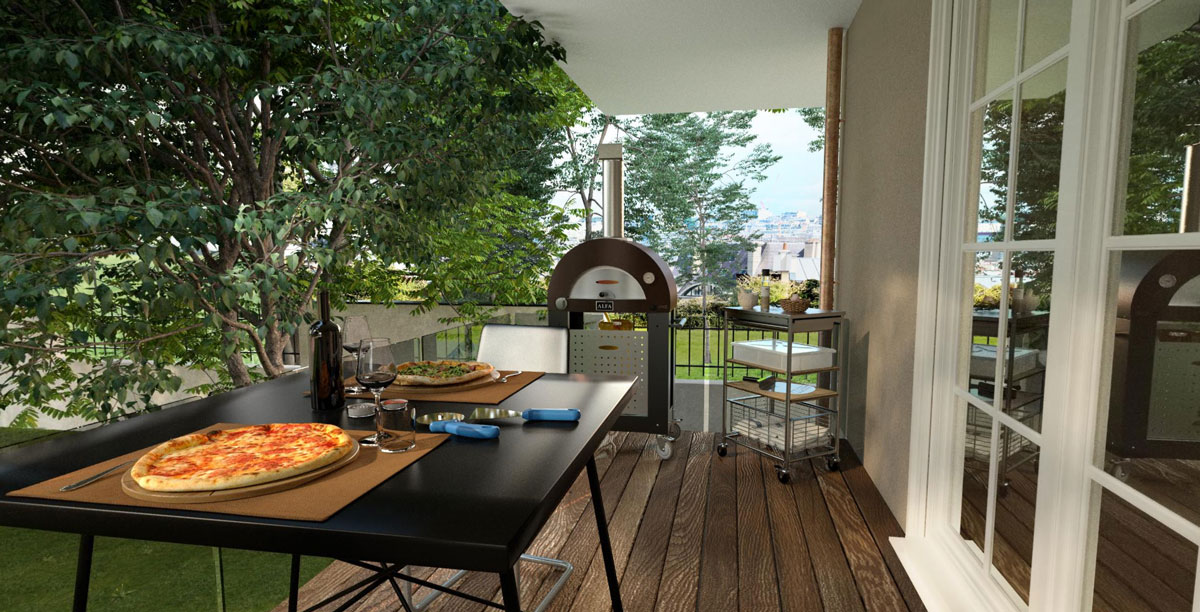The wood-burning oven is a very versatile cooking tool as you can bake an infinity of foods in it.
It takes more skill to cook with firewood than with other types of fuels (gas and electricity) but this is the very reason why the wood-fired oven can give you unparalleled satisfaction.
The greater effort commands a better reward in the quality of cooking as the wood-fired oven makes the most of every recipe thanks to its thermal characteristics and the unique flavor that wood imparts to the food; not to mention that it doubles as an outstanding piece of furniture.
The wood fire has the power to provide a warm and cozy atmosphere for any gathering. These are just some advantages of the wood-burning oven compared to its gas-fired or electric counterparts.
To find out more, browse the articles on our blog.
In this article, we will talk about the different solutions to install a wood-burning oven.
To begin with, we will explore the many factors that can affect the choice of the installation based on different needs and focusing our attention particularly on indoor or outdoor, freestanding or built-in, masonry or portable ovens.
These choices are certainly influenced by other determinants such as the frequency of use, the available space and budget.
Finally, after having weighed all the key factors for your choice, we will give you some useful tips to make the most of your investment.

The different options to install a wood-fired oven
The wood-fired oven is a cooking tool suitable for various applications and can be operated in very different contexts.
Its origins date back to the dawn of civilization, but its use is still widespread especially in country houses where it integrates perfectly into the surrounding landscape and where you can grow your own firewood.
In the past, communal ovens were used to feed most of the village families and often became the key elements on which to build the houses.
The need to design a wall flue system is undoubtedly a major hindrance to installing this type of oven in an urban setting. Building it outdoors is clearly a way to overcome this obstacle.
Another type of classification is between built-in and freestanding oven. The first one is installed into the kitchen unit and only the oven mouth is exposed while the freestanding model just needs a support base and allows greater flexibility.
Both types can be designed for indoor or outdoor use.
A further distinction is between masonry and portable ovens. This is the result of technological developments that has made it possible to build powerful ovens with extremely light raw materials.
The traditional wood-fired refractory oven is a bulky and heavy appliance that does not lend itself well to being moved. By combining steel and refractories, we were able to significantly reduce weight by designing models light enough to move them almost anywhere.
To sum it up, here are the basic categories to help you choose the right oven:
- Indoor or outdoor oven.
- Built-in or freestanding oven.
- Masonry or portable oven.
Let us explore them together.
Indoor vs outdoor oven
The choice depends on various factors. If you want to sit a wood-burning oven in the home kitchen, you might have to install a chimney system through the wall or roof and face huge renovation costs as long as local planning regulations permit these works.
You could also install the oven in the existing fireplace. Of course, everything is much easier if you plan to put an oven in a new house because in this case you will have wide latitude in choosing the layout you prefer. You will be free to use your indoor oven all year round, thus discovering that baking superb pizzas and heating the house at the same time is a no-brainer. Such constraints are less likely to affect outdoor ovens that are the best way to enjoy your garden in the warmest season.

Built-in vs freestanding oven
As we have seen above, the built-in oven is integrated into the wall leaving only the mouth visible while the freestanding one rests on its base and fits in the existing spaces. Built-in ovens are normally planned in the design phase of indoor or outdoor kitchens.
Freestanding models need a solid base, often made of brick and concrete, all the more so if the base sits on soft ground outside the house.
Masonry vs portable ovens
The refractory wood-burning oven is usually built on-site and, given its weight and bulk, once constructed is no longer moved. To meet the growing market demand, Alfa Forni has developed Forninox Technology which combines the advantages of steel with those of refractories. In fact, by covering the refractory structure of the oven with a stainless-steel dome we have been able to manufacture ovens with high thermal efficiency (they heat up in a few minutes instead of hours) and a low weight to move them around more easily.
The portable ovens come with castors and are perfect for outdoor use. They can be placed everywhere in the garden or terrace and stored when the party is over. They afford you extreme versatility and maximum performance without the hassle of time-consuming and expensive masonry work.

How to choose the type of installation for a wood-burning oven
After examining the different options for installing a wood-fired oven, let us look at the factors that can affect the choice. All the wood-burning ovens we have talked about are valid alternatives for baking delicious recipes but by selecting the most suitable installation for your situation and needs, you will be sure to get the most of your investment. The factors to consider are:
- The frequency of use.
- The space available for the installation.
- The budget available for the installation.
Let us have a more in-depth look at them.
1. The frequency of use
The high heat output of a wood-fired oven allows you to optimize the accumulated heat during longer cooking periods, which makes it perfect for your daily meals. If you like to use it often to prepare lunches and dinners for family and friends, you might consider an indoor wood-burning oven to bake properly even during the coldest months. Of course, this is a particularly great choice when planning a new house that must allow for the space required to install a chimney system.
If, on the other hand, you already have a fully equipped kitchen and are looking for a wood-fired oven to use in the summer, then an outdoor masonry, built-in or freestanding model is the way to go. If you have a thing about easy-to-use and versatile ovens, then the portable wood-fired model is right up your alley. Be sure to consult local regulations before choosing an indoor oven.
-
The space available for the installation.
Another important issue in choosing the right type of installation is the availability of space. Built-in ovens usually need more space than freestanding ones, as they have to be integrated into existing walls or units but, in this way, they are more protected and will last longer. If space is tight, a freestanding oven will do for both indoors and outdoors; if you don’t want to fix it in place, the portable model is what you need.
-
The budget available for the installation.
The last aspect we take into consideration is the budget allocated to buy the oven. In general, the oven price increases according to the size and quality of the appliance. Size and quality being equal, the most expensive ovens are the built-in ones due to the costs of masonry work required for their installation. Portable ovens usually need no or much less installation work than their traditional counterparts.
What is certain is that a brick or masonry wood-burning oven is an investment worth thinking about. It does add value to the home and make it more attractive to potential buyers when selling. The return on investment will be partly linked to the quality of the home wood-fired oven that cooks like a commercial one.

Now you can really choose what is the best wood-burning oven for you
We have seen that selecting the wood-fired oven that best suits your needs is a process that involves multiple factors.
In the first part of this article, we have reviewed the three variables related to the different types of installation, namely the place where to put the ovens (inside or outside the house), the way they are integrated into the kitchen (built-in or freestanding) and their ease of movement (masonry or brick and portable).
Ultimately, portable ovens are always freestanding and for outdoor use while masonry/brick ones can be constructed inside or outside and may be freestanding or built-in. Later, we explored the main factors that can help you make the good choice: the frequency of use, the space and the budget available. In fact, this article is a guide to optimize your investment in a high-performance wood-burning oven of which Alfa is one of the leading manufacturers.
If you seek inspiration for the various installation options, visit the page of our website dedicated to our customer oven set-ups. Now you have enough knowledge to make an informed decision on your spanking-new wood-burning oven from the wide range of models in the Alfa home line.




